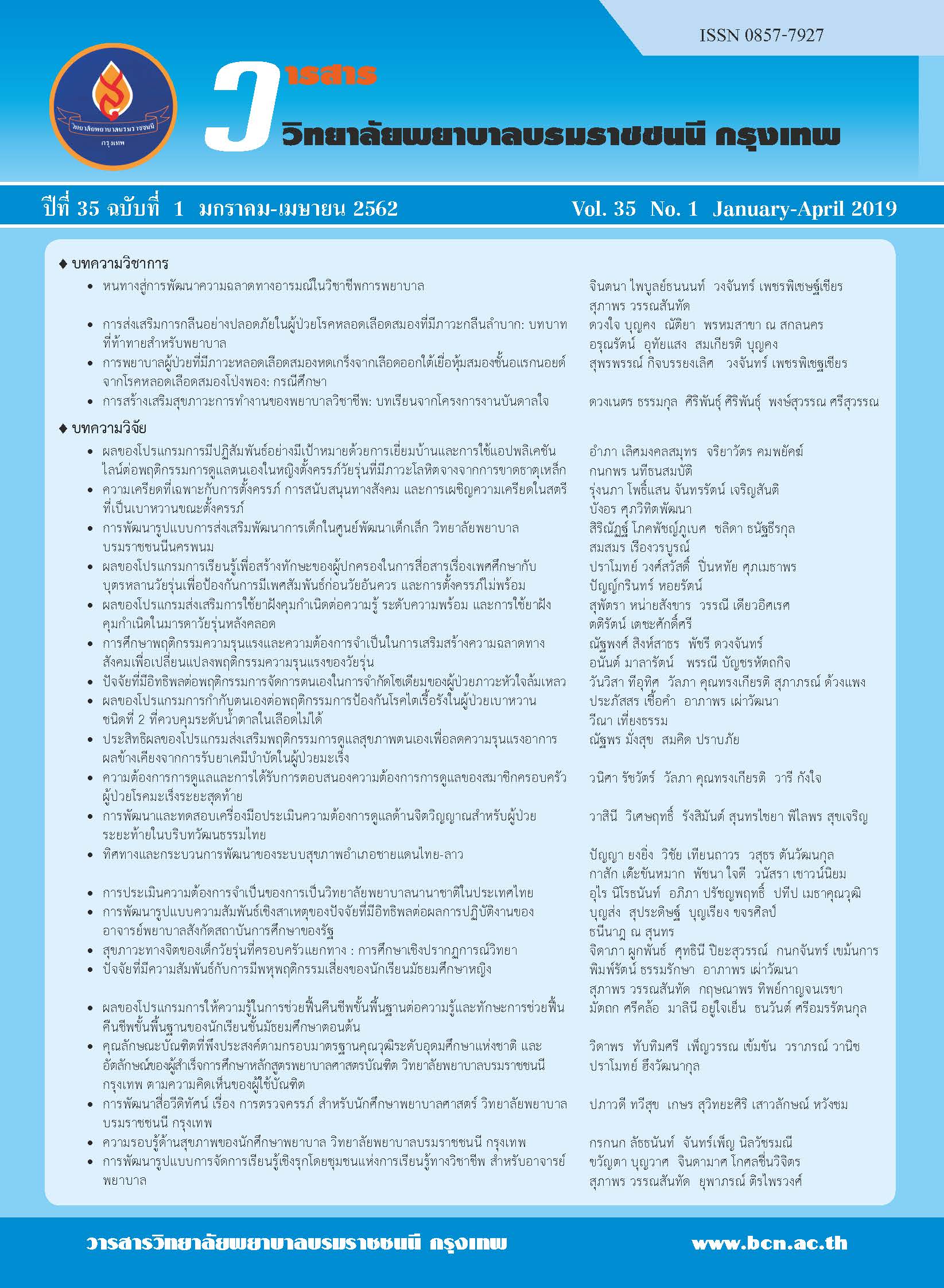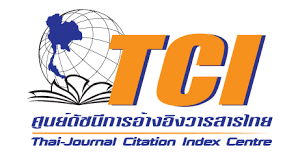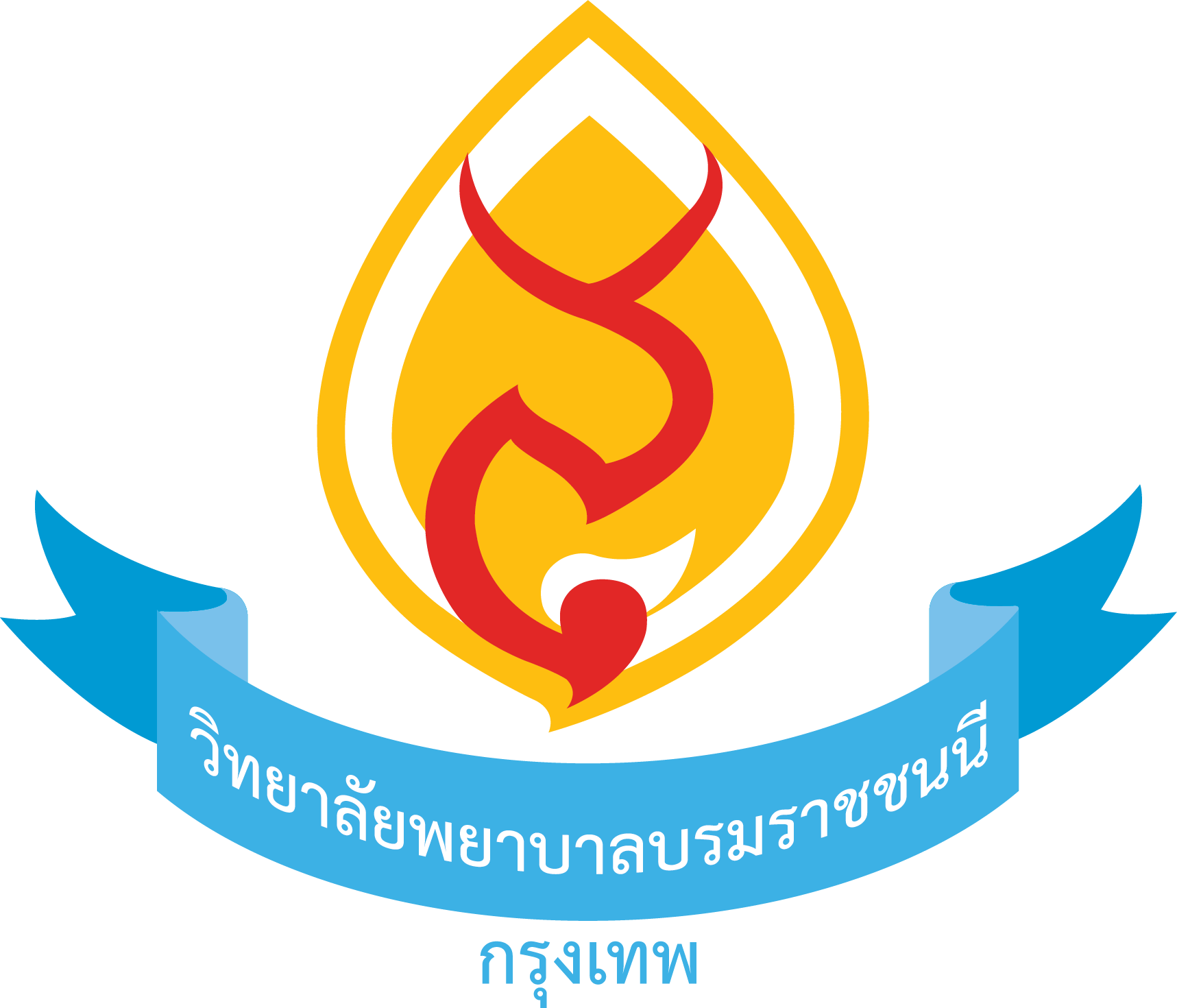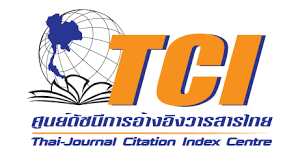ปัจจัยที่มีอิทธิพลต่อพฤติกรรมการจัดการตนเองในการจำกัดโซเดียม ของผู้ป่วยภาวะหัวใจล้มเหลว
คำสำคัญ:
พฤติกรรมการจัดการตนเอง, การจำกัดโซเดียม, ผู้ป่วยภาวะหัวใจล้มเหลวบทคัดย่อ
การวิจัยแบบความสัมพันธ์เชิงทำนายนี้ มีวัตถุประสงค์เพื่อศึกษาปัจจัยที่มีอิทธิพลต่อพฤติกรรมการจัดการตนเองในการจำกัดโซเดียมของผู้ป่วยภาวะหัวใจล้มเหลว ซึ่งประกอบด้วย ความรู้เกี่ยวกับภาวะหัวใจล้มเหลว ระดับความรุนแรงของโรคภาวะซึมเศร้า และการสนับสนุนทางสังคม กลุ่มตัวอย่างคือ ผู้ที่ได้รับการวินิจฉัยจากแพทย์ว่ามีภาวะหัวใจล้มเหลว ที่มารับการตรวจรักษาที่คลินิกอายรุกรรมผู้ป่วยนอก โรงพยาบาลพระปกเกล้า จังหวัดจันทบุรี ที่มีคุณลักษณะตามเกณฑ์ที่กำหนดจำนวน 85 ราย โดยทำการสุ่มอย่างง่าย เพื่อให้ได้กลุ่มตัวอย่างตามที่กำหนดไว้ เก็บข้อมูลในช่วงเดือนพฤศจิกายน พ.ศ. 2560 - เดือนมกราคม พ.ศ. 2561 เครื่องมือที่ใช้ในการวิจัย คือ แบบประเมินพฤติกรรมการจัดการตนเองในการจำกัดโซเดียมของผู้ป่วยภาวะหัวใจล้มเหลว แบบประเมินความรู้เกี่ยวกับการจัดการตนเอง แบบประเมินภาวะซึมเศร้า และแบบประเมินการสนับสนุนทางสังคม มีค่าความเชื่อมั่น เท่ากับ .80, .78, .81 และ .97 วิเคราะห์ข้อมูลโดยใช้สถิติเชิงพรรณนา และสมการถดถอยพหุคูณ
ผลการศึกษาพบว่ากลุ่มตัวอย่างมีค่าคะแนนพฤติกรรมการจัดการตนเองในการจำกัดโซเดียม โดยรวมเฉลี่ยเท่ากับ 41.81(SD = 9.55) โดยความรู้เกี่ยวกับการจัดการตนเอง เป็นปัจจัยทำนายพฤติกรรมการจัดการตนเองในการจำกัดโซเดียมของผู้ป่วยภาวะหัวใจล้มเหลว ได้ร้อยละ 17.60 อย่างมีนัยสำคัญทางสถิติ (p< .001) ผลการศึกษานี้เสนอแนะว่า การส่งเสริมพฤติกรรมการจัดการตนเองในการจำกัดโซเดียมของผู้ป่วยภาวะหัวใจล้มเหลว พยาบาลควรมุ่งเน้นการให้ความรู้ในการจัดการตนเอง เพื่อให้ผู้ป่วยมีพฤติกรรมการจัดการตนเองในการจำกัดโซเดียมที่ถูกต้องและต่อเนื่องต่อไป
Downloads
เอกสารอ้างอิง
2. The Heart Association of Thailand under the Royal Patronage of H.M. the king. Thai heart association guideline. [Internet] 2014. [cited 2016 April 18]. Available from /http://www. thaiheart.org.
3. Policy and Strategy, Office of Permanent Secretary. Public health statistics in 2015. [Internet]. Nonthaburi: Office of Permanent Secretary; 2015 [cited 2016 Jan 6]. Available from http://www.thaincd.com/document/file/download/paper-manual/Annual-report-2015.pdf.
4. Ponpan T. The effects of self-care promoting program on self-care behaviors and quality of Life among Patients with Heart Failure in Prachuapkhirikhan Hospital. Thai Journal of Cardio-Thoracic Nursing 2015;26:2-14. (in Thai)
5. Chung ML, Doering LV, Moser DK. Vulnerabilities of patients recovering from an exacerbation of
chronic heart failure. American Heart Journal 2005;150:984.e7–984.e13.
6. Cleland JGE, Cohen-Solal A, Aguilar J, Dietz R, Eastangh J, Follath F. Management of heart failure
in primary care (The improvement of heart failure program): An international survey. The Lancet
2002;360:1631-39.
7. Son Y, Lee Y, Song EK. Adherence to a sodium-restricted diet is associated with lower symptom
burden and longer cardiac event-free survival in patients with heart failure. Journal of Clinical
Nursing 2011;20:3029–38.
8. Ryan P, Sawin K. The individual and family self-management theory: Background and perspective
on context, process, and outcomes. Nursing Outlook 2009;57:217-25.
9. Kollipara UK, Jaffer O, Amin A, Toto KH, Nelson LL, Schneider R, et al. Relation of lack of knowledge
about dietary sodium to hospital readmission in patients with heart failure. American Heart
Journal 2008;102:1212-15.
10. Bentley B, De Jong MJ, Moser DK, Peden AR. Factors related to nonadherence to low sodium diet
recommendations in heart failure patients. European Journal of Cardiovascular Nursing 2005;4:331-6.
11. Chom S, Rewwadee P, Punyawee C, Wongrut S. Self-Care of Chronic Heart Failure Patients.
Thai Journal of Nursing Council 2551;23:35-45. (in Thai)
12. Sineenucht L. Factors influencing self-management among patients with heart failure. [Dissertation
for the Master degree of Nursing Science Program in Adult Nursing]. Chonburi: Burapha University;
2015. (in Thai)
13. Jerant AF, Friederichs-Fitzwater MMV, Moore M. Patient’s perceived barriers to active selfmanagement
of chronic conditions. Patient Education and Counseling 2005;57:300-7.
14. Graven LJ, & Grant JS. Coping and health-related quality of life in individuals with heart failure:
An integrative review. Heart & Lung 201; 42:183-94.
15. Faul F, Erdfelder E, Buchner A, & Lang AG. Statistic power analyses using G*Power 3.1: Tests for
correlation and regression analyses. Behavior Research Methods 2009;41:1149-60.
16. Jarinya K. Relationships among knowledge, perceived barriers, perceived benefit, social support,
self-efficacy and sodium consumption behaviors in heart failure patients. [Dissertation for the
Degree of Doctor of Philosophy Program in Nursing Science]. Bangkok: Chulalongkorn University;
2013. (in Thai)
17. Junjira K. The effect of a supportive educational program on knowledge, self-care behavior, and
the severity of heart failure. [Dissertation for the Master degree of Nursing Science Program in Adult
Nursing]. Bangkok: Mahidol University; 2008. (in Thai)
18. Department of Mental Health. Ministry of Public Health. Guideline of Mental Measuring for Public
Health Staff in Primary Hospital (NCD Clinic) Revised edition. Nonthaburi: Printing Agriculture
Cooperatives of Thailand; 2015. (in Thai)
19. Chantana L. The development of the quality of life instrument in Thai patients with post
myocardial infection. [Dissertation for the Degree of Doctor of Philosophy Program in Nursing
Science]. Bangkok: Chulalongkorn University; 2006. (in Thai)
20. Yancy CW, Jessup M, Bozkurt B, Butler J, Casey DE, Drazner MH, et al. ACCF/AHA guideline for the
management of heart failure: executive summary. Circulation 2013;128:1810-52.
21. Rapiphun N. Factors influencing heart-related quality of life among congestive heart failure patients.
[Dissertation for the Master degree of Nursing Science Program in Adult Nursing]. Chonburi: Burapha
University; 2016. (in Thai)
22. Riegel B, Carlson B, & Glaser D. Development and testing of a clinical tool measuring
self-management of heart failure. Heart and Lung 2000;29:4-15.
23. Hole T, Grundtvig M, Gullestad L, Flonaes B, Westheim A. Improved quality of life in Norwegian
heart failure patients after follow-up in outpatient heart failure clinic: results from the Norwegian
heart failure registry. European Journal of Heart Failure 2011;12:1247-52.
24. Vaccarino V, Kasl SV, Abramson J, & Krumholz HM. Depressive symptoms and risk of functional
decline and death in patients with heart failure. Journal of the American College of Cardiology
2001;38:199–205.
25. Awan ZA, Ghaffar R, Khan A, Khan S. Frequency of depression in patients with chronic heart
failure. Journal of Ayub Medical College 2012;24:26-9.
26. Xiong GL, Fiuzat M, Kuchibhatla M, Krishnan R, Connor CMO, & Jiang W. Health status and
depression remission in patients with chronic heart failure. Circulation Heart Failure 2012;5:688-92.
ดาวน์โหลด
เผยแพร่แล้ว
รูปแบบการอ้างอิง
ฉบับ
ประเภทบทความ
สัญญาอนุญาต
บทความที่ได้รับการตีพิมพ์ เป็นลิขสิทธิ์ของวารสารวิจัยสุขภาพและการพยาบาล (วิทยาลัยพยาบาลบรมราชชนนี กรุงเทพ) ไม่สามารถนำไปตีพิมพ์ซ้ำในวารสารฉบับอื่น


















